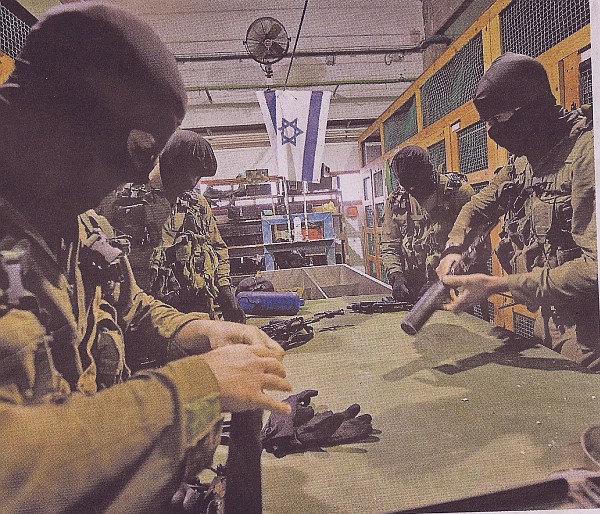The long-delayed and long-awaited UN report [PDF] on the Mavi Marmara massacre has finally been released by the New York Times.
I guess the newspaper feels a responsibility that it should spin this as much in Israel’s favor as possible before the report get’s officially released.
“Report Finds Naval Blockade by Israel Legal but Faults Raid,” says the headline. The siege is OK. Executing unarmed activists is not OK.
“Israel considers the report to be a rare vindication for it in the United Nations,” we are told.
There are a few unpleasant pesky detail however. Go all the way down to paragraph seventeen of the Times article and we learn:
The report assailed Israel for the way in which the nine were killed and others injured. “Forensic evidence showing that most of the deceased were shot multiple times, including in the back, or at close range has not been adequately accounted for in the material presented by Israel,” it says. The report does, however, acknowledge that once on board the commandos had to defend themselves against violent attack. The report also criticizes Israel’s subsequent treatment of passengers, saying it “included physical mistreatment, harassment and intimidation, unjustified confiscation of belongings and the denial of timely consular assistance.”
Like so many elements of the Israeli-Palestinian conflict, the events on the Mavi Marmara produced two fiercely competing narratives, each full of self-justification and contempt for the other.
And couldn’t we move forward so much more easily if it wasn’t for those fiercely competing narratives.
But just a minute. The panel — even if it’s conclusion amounted to saying, can’t you all just learn to get along — did actually note that Israel provided no information whatsoever on the circumstances in which nine men were killed. And had those deaths not occurred, there would have been no inquiry.
Let’s repeat that. After nine men were killed on board the Mavi Marmara on May 31, 2010, and the United Nations conducted a commission of inquiry into this incident, Israel provided no information whatsoever on the circumstances in which each of these deaths occurred.
The Israeli Point of Contact sought to explain to the Panel that the chaotic circumstances of the situation, made it “difficult to identify specific incidents described by soldiers as related to a specific casualty from among the nine activists who died during the takeover.” This is greatly to be regretted.
Indeed — especially since the evidence — bullets shot between the eyes or in the back of the head — strongly suggests that several of these deaths involved cool calculation. In other words, these were execution-style killings.
These are the descriptions of deaths about which the UN panel regrets Israel could offer no further information:
In the Panel’s view the following facts are of particular concern and have not been adequately answered in the material provided by Israel. Although the Israeli Point of Contact provided a general response to these points, he was unable to provide the Panel with more detailed information, particularly with respect to the death of the passenger described below:
- Seven of the nine persons killed received multiple gunshot wounds to critical regions of the body: Ali Bengi, Cengiz Akyüz, Çetin Topçuoğlu, Fahri Yaldız, Furkan Doğan, İbrahim Bilgen and Necdet Yıldırım.
- Five of those killed had bullet wounds indicating they had been shot from behind: Cengiz Akyüz, Çetin Topçuoğlu, Necdet Yıldırım, Furkan Doğan and İbrahim Bilgen. This last group included three with bullet wounds to the back of the head: Cengiz Akyüz, Çetin Topçuoğlu and Furkan Doğan. İbrahim Bilgen was killed by a shot to the right temple.
- Two people were killed by a single bullet wound: Cevdet Kılıçlar was killed by a single shot between the eyes; and Cengiz Songür was killed by a shot to the base of the throat.
- At least one of those killed, Furkan Doğan, was shot at extremely close range. Mr. Doğan sustained wounds to the face, back of the skull, back and left leg. That suggests he may already have been lying wounded when the fatal shot was delivered, as suggested by witness accounts to that effect.
- No evidence has been provided to establish that any of the deceased were armed with lethal weapons. Video footage shows one passenger holding only an open fire hose being killed by a single shot to the head or throat fired from a speedboat.


